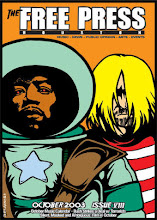The Moon exhibit at MFA

A series of films inspired by or related to the Moon will unroll over the next several weeks at the MFAH in conjunction with the museum’s exhibit The Moon: Houston, Tranquility Base Here, The Eagle Has Landed.
The entire project, described on the museum website as a celebration of the ”40th anniversary of the Apollo 11 lunar landing, explores 500 years of mankind's fascination with the moon, from early telescopes, to romantic paintings, to NASA photographs.”
One aspect of the show includes paintings from several eras that reference the moon, not the least of which include contemporary paintings from astronaut Alan Bean. But it’s the antiquities that sparkle like stars, like a 200-year old selenographic globe of the moon that was never unpacked from its original manufacture until 1985 and looks like it was made yesterday. Galileo Galilei’s personal copy of The Starry Messenger (Sidereus Nuncius) first published in 1610 was the basis for modern views of the moon having a mountainous surface and not being a perfect orb. The book sits propped open, to pages that show text and illustrations, under glass. Also mesmerizing are classic paintings that in one way or another depict moonlight. Take a look at the moon peaking around the corner in Fredrich Nerly’s 1842 The Piazzetta in Venice in Moonlight and you feel like you’re bathed in nightlight.
A couple of the films in the Cosmic Celluloid series are significance in the sense that they offer profound moon sequences.
The documentary For All Mankind (1989) was the first time anyone had taken the effort of going through hundreds of hours of 16mm footage shot by the astronauts during the various missions to the moon. Director Al Reinert previously worked for The Houston Chronicle as well as Texas Monthly. For All Mankind works so well because the footage of men on the moon hopping up and down like Texas jackrabbits kind of puts our civilization into sharp perspective.
For All Mankind truly is the greatest home movie from another world ever shot. Music by Eno only gives the whole enterprise a soothing vibe. For All Mankind offers such a definitive portrait on America’s 60s and 70s moon exploration that in some ways I am surprised the film doesn’t have a bigger reputation.
Reinert spent most of the 80s working on the film, taking the time needed to view portions of the millions of feet of special Kodak space stock film that NASA has stored in vaults, as well as interviewing the astronauts associated with the missions. Perhaps it’s not ironic that in the time since For All Mankind came out (the festival circuit in 1989, general release in 1990) the space program has gotten further from going back to the moon than ever. Current NASA predictions have us back on the moon in 2019.
For All Mankind will be screened the first weekend in October, on Friday and Saturday at 7 pm. and Sunday at 5 pm.
2001: A Space Odyssey posits that the moon contains a hidden monolith that when excavated sends a piercing signal to a similar monolith floating in space around Jupiter. This kind of advanced alarm system would theoretically be used by alien civilizations as a signal that Earth had advanced to the level of interstellar travel. Somehow that astronaut getting sent back as a star baby only gets better every time. 2001 unwinds in a pristine 35mm print on Thanksgiving weekend, November 27-29.
Other space films, playing as part of the museum’s Family Matinee series, include A Trip to the Moon (a 12-minute silent film shown in a loop in a darkened room at the exhibit) and E.T. (Sunday October 4, 2 p.m.). Get ready to launch.









0 Comments:
Post a Comment
<< Home